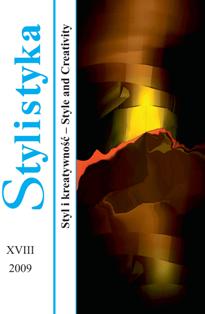Kulturowe uwarunkowania tekstów humorystycznych
THE CULTURAL DIMENSIONS OF HUMOROUS TEXTS
Author(s): Dorota BrzozowskaSubject(s): Language and Literature Studies
Published by: Uniwersytet Opolski
Keywords: POLES; CHINESE; STEREOTYPES; HUMOR; CULTURAL DIMENSIONS
Summary/Abstract: The aim of the paper is to present the results of an analysis of the “Chinese Soup” comic sketch performed by the Polish “Ani Mru Mru” comedy group. The text shows in a very condensed way the (auto-, hetero- and meta-) stereotypes dealing with the culture perceived as the most distant one. The oppositions between Asian and European cultures belong to the most often debated issues in a period when the cultures have more opportunities than ever to melt and meet. The appearance of new characters in the discussed genre is only a reflection of larger changes and a growing interest in oriental cultures. The theoretical framework is based on the concept of cultural dimensions (Kluckhohn, Strodtbeck 1961; Hofstede 2000; Trompenaars, Hampden-Turner 2002) and language and cultural relations (Duszak 1998; Kramsch 1998; Wierzbicka 1999). The study of humor was conducted with the use of tools proposed in the semantic theory of humor (Raskin 1985) and in the general theory of verbal humor (Attardo 1994). The major features present in the humorous text may be divided into three groups. The first one is connected with the language which is perceived as very difficult and incomprehensible, and totally different from the Polish language or any other European language. The second focuses on differences in manners – especially food habits. The third category pinpoints visual differences and strangeness.
Journal: Stylistyka
- Issue Year: 2009
- Issue No: XVIII
- Page Range: 337-349
- Page Count: 1
- Language: Polish

